“Captains log #1, Stardate 51,108.6: As the best cadet in the officer’s academy, they promoted me to captain of an intergalactic spaceship right after the graduation ceremony. The hull of the ship is damaged but – apart from some destroyed storage space – looks just as impressive as ever. My crew is young and green, but willing to work hard and play harder. The division of labour was somewhat arbitrary, but as we explore the universe, these cadets and Ensigns will gradually discover their special abilities as they go about their personal voyage as well.

Captains log #16, Stardate 51,324.2: just over two space months have passed since we embarked on our enterprise and voyage(r). Some crew members have been promoted and others have been resting in the waiting room for quite some time. The slackers. Time to put them to some work. Along the way, we have discovered space stations, made contact with a population of ancient androids, captured pirates, maintained diplomatic ties and completed missions. Some missions more successful than others…. Our voyage of discovery could have been less fortunate. Quite possibly we could have been requested to give a lift to space hippies or had to fight to the death with a man in a rubber dinosaur suit. Remember, live long and may the force prosper with you and beyond!”
Game design and purpose
Starship Captains is true star trek through the galaxy. Players take on the role of recently promoted Starship Captains taking the helm and command of their first starship. These young space captains are trying to prove themselves in a galaxy full of space pirates, arrogant androids, ancient artefacts and interplanetary adventures. By capturing pirates, improving diplomatic ties and completing missions, players will earn victory points. After four very concise and streamlined rounds, which player proves to be the best space captain?
Players set up the central board by placing a triangular tile on each planet. These tiles determine the starting positions of mission cards and space stations and bonuses. Players place pirates, prepare the market with tech cards and prepare their personal player boards with damage tokens, their crew, medals and and promotion rings. Players also place the three diplomatic tracks and corresponding event cards. The various game boards conveniently show where everything should be placed, making set-up simple and intuitive. The game contains many components, so an insert would be a good upgrade to significantly shorten the game set-up.
Gameplay
Starship Captains combines mechanisms of resource management and engine building with a fitting theme and streamlined and elegant gameplay. In four rounds, players will use their Ensigns and cadets (their crew) to perform actions and complete missions. Each turn, a player chooses to activate a room (to perform actions) or complete a mission.
At the start of the game, each player starts with four rooms on his or her ship. During the game, players can unlock new rooms by playing or using tech cards. The rooms correspond to actions players perform when they choose this room. The basic actions are: 1. move the spaceship around the game board, 2. defeat a pirate on an adjacent route, 3. take a tech card from the market and play it on their personal tech board for extra actions and bonuses, and 4. repair their ship.
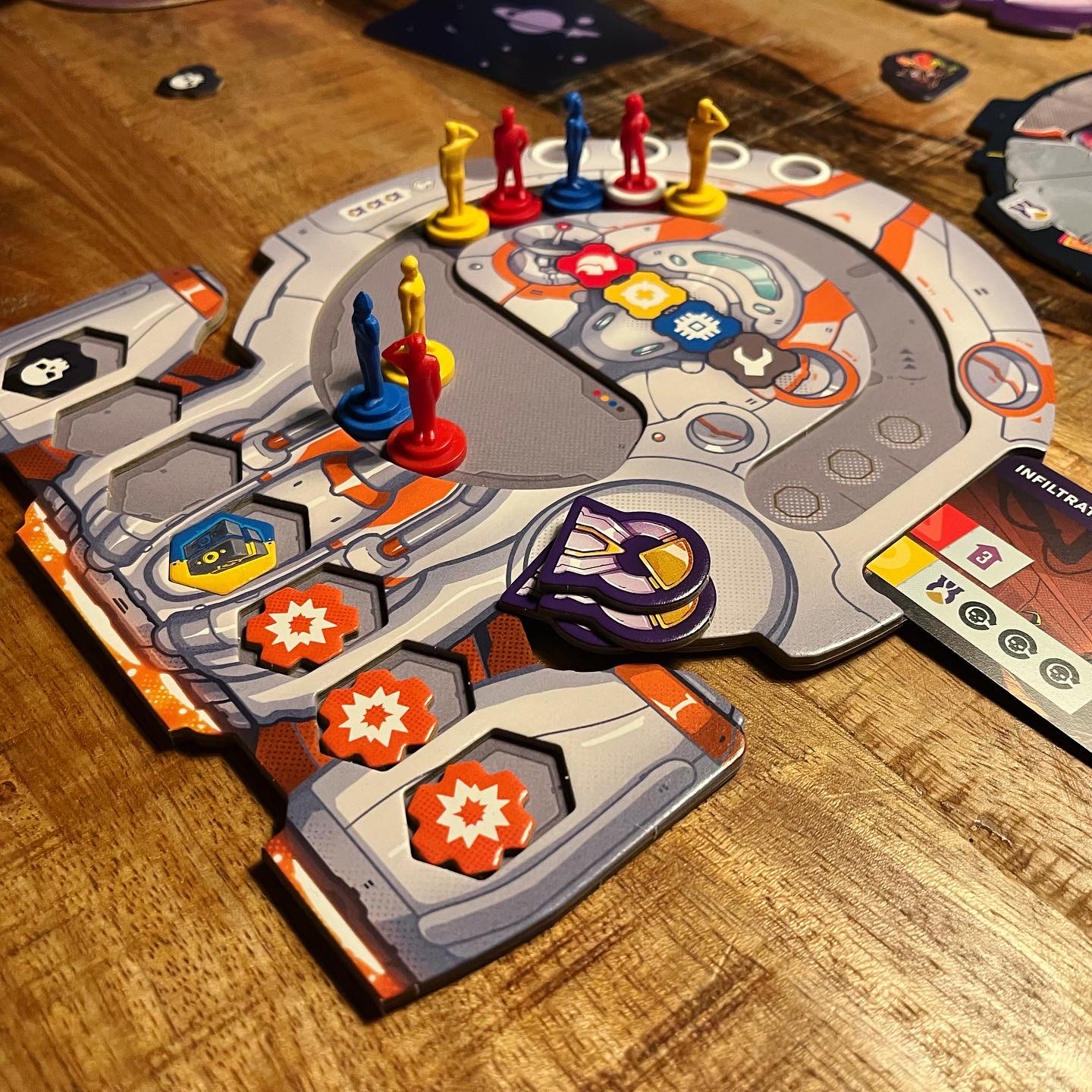

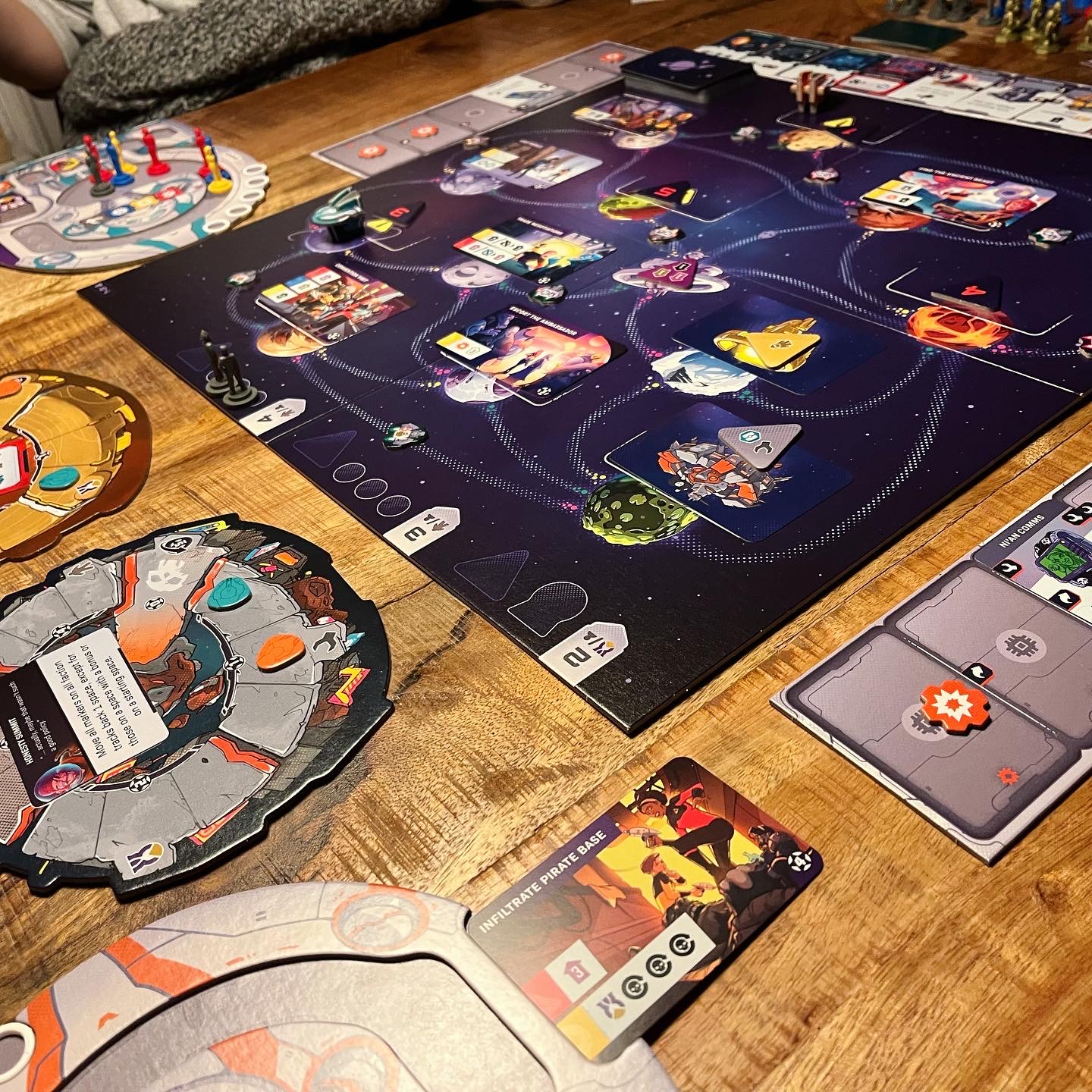
To use a room, a player must use an available crew member in the correct colour from their waiting room. Cadets (the grey crew members) can only be used for the basic repair action, but you can also use any other crew member for this action. When you deploy a crew member, tap this crew member on the room you wish to activate and then place the crew member in the queue on your spaceship. These crew members are now resting after hard work and cannot be used unless they leave the queue again.
Through a move action, players can travel to other planets. On some planets, a mission card has been played. The first player to travel to a mission has an exclusive chance to complete the mission. During a turn, a player can choose to complete a mission instead of activating a room. The mission card shows how many crew members a player must deploy to complete the mission. By deploying the right colours of crew, a player also receives bonuses for completing a mission. Missions are worth points at the end of the game. Each time a mission is completed, the highest mission tile is placed on the vacant spot and then flipped over. A new mission card is placed where the tile originally was. Once all mission tiles have been moved and flipped, new pirates enter the game board. This ingenious mechanism ensures that the game board is constantly changing and evolving. For me, this is one of the many highlights of the game.
By completing missions or defeating pirates, players often get bonuses. Players meet androids during the game and sometimes find ancient technology and medals. Androids can be deployed just like crew members to complete missions. However, androids can only be deployed once. By depositing artefacts, players can perform actions without taxing their crew. Medals allow players to promote or retrain their crew members. Cadets can be promoted to Ensigns which now gives them an actual colour and a speciality. Ensigns can be retrained to a different speciality and colour. By using three medals, a player can promote one of his or her Ensigns to the rank of commander. A commander can activate two rooms or mission bonuses or activate a room and ‘recall’ another crew member from the queue.
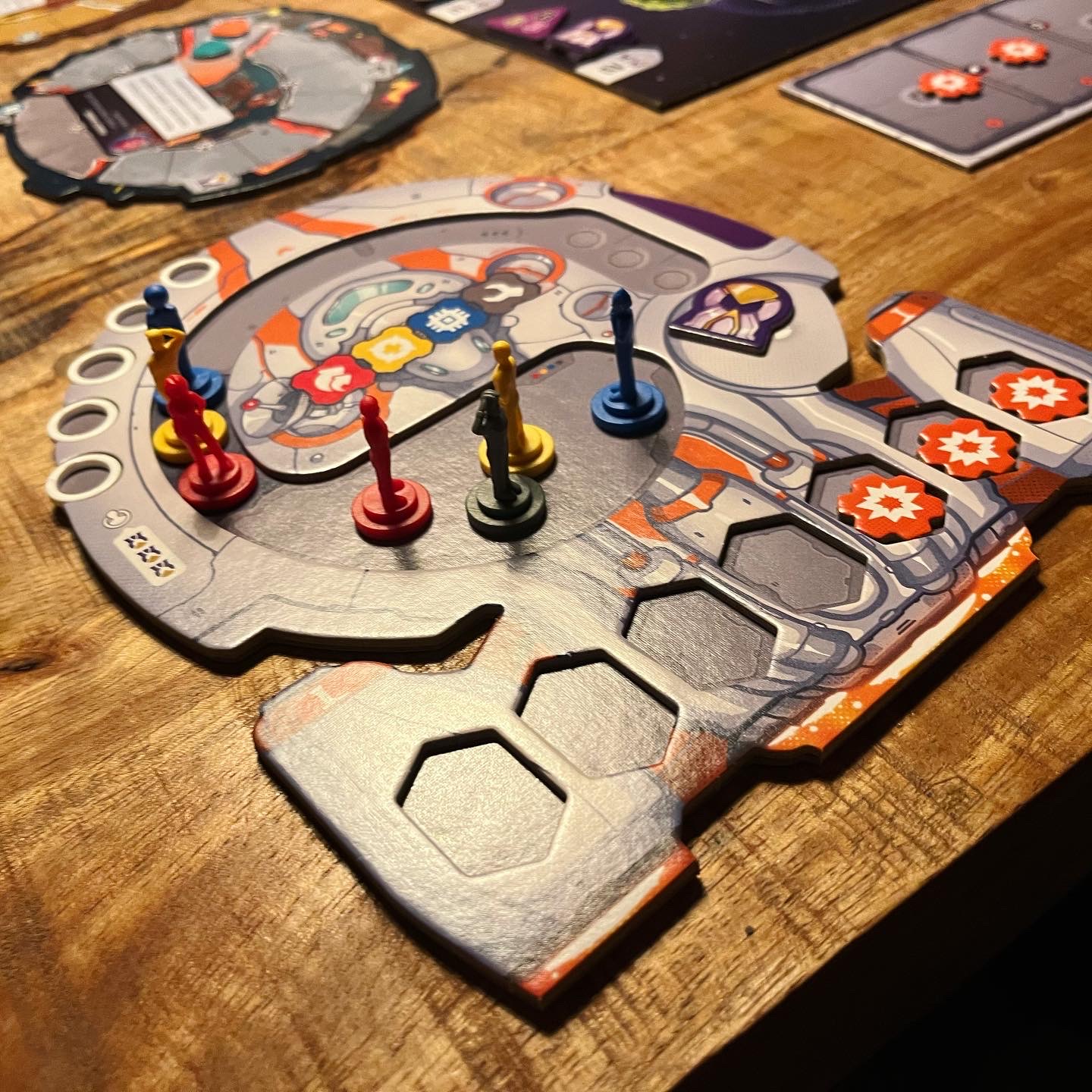
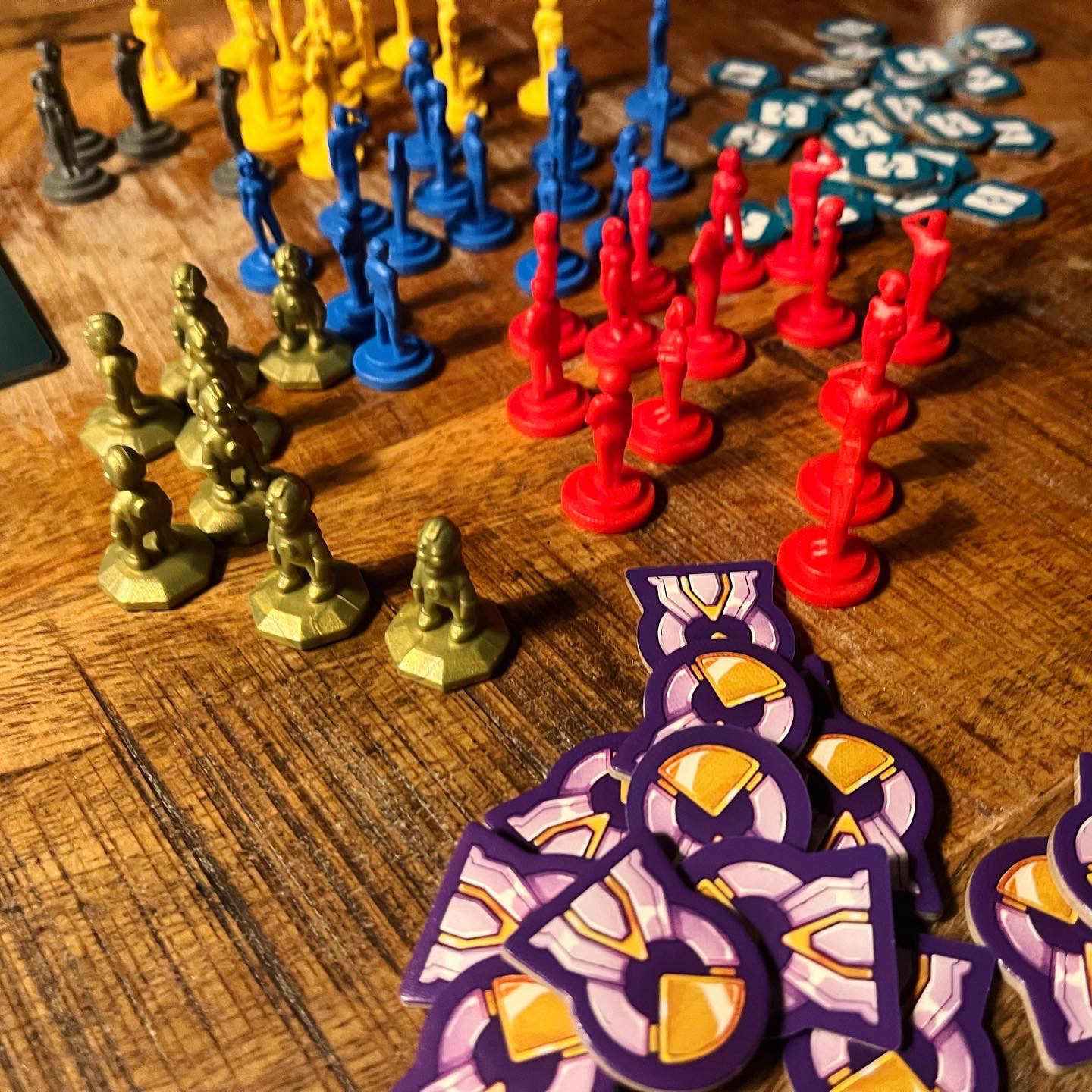
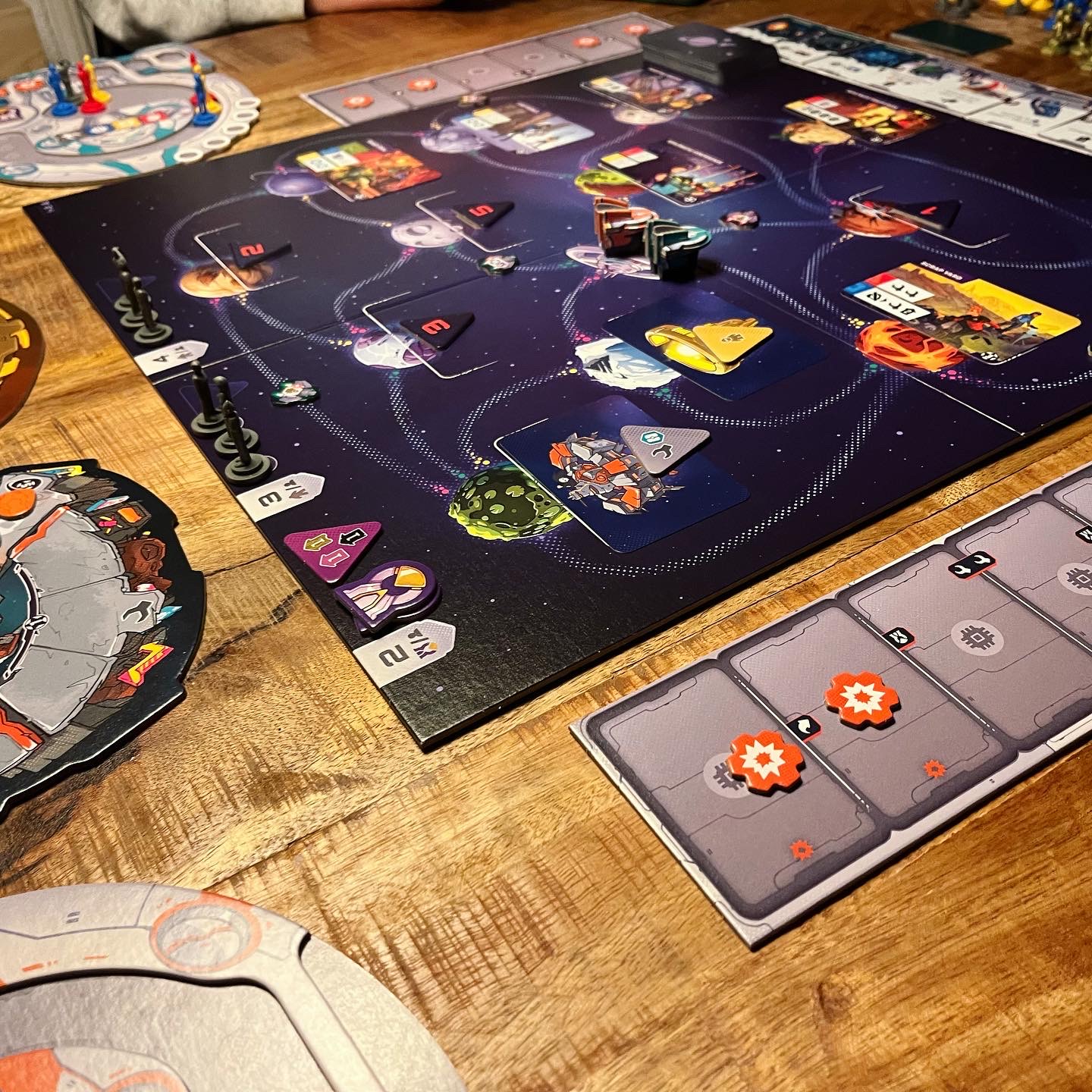
Some actions or bonuses cause a player to advance on one of the three diplomatic tracks. This gives player bonuses and points at the end of the game. Players also sometimes trigger a diplomatic event with varied bonuses and negative effects.
At the end of a round, players receive medals and or new cadets. Also, the queue of used crew members shifts in an ingenious and tactile way so that players have these crew members at their disposal again during the next round. Three crew members remain in the queue, so players should plan well for the actions that will want to perform in subsequent rounds.
Verdict
Starship Captains is easy to explain and set up. The theme and colourful illustrations are very appealing and the actions players can perform are clear and straightforward, but there are plenty of choices. Indeed, every turn players are faced with several choices and options: which crew member do I put and for which actions. Do I buy tech cards for extra actions and bonuses, do I complete a mission and so on. Players should plan their actions well ahead to optimise their turns and the round as much as possible. Since players don’t get all their crew members back in successive rounds, this requires them to deploy their crew members in the right order.
Starship Captains is not a difficult game to learn, but it is difficult to master. As a result, the game is almost perfectly balanced in terms of complexity. For novice players, it is easy to get into as the game is forgiving, intuitive and uncluttered. The many choices and variety also make it great for experienced players. Starship Captains makes you want to put it on the table more often to optimise your strategy and engine to get the most out of your ship and crew. If you manage to plan and execute the right sequence of actions, it feels super satisfying.
I appreciate the clear design, clear rules and elegant and streamlined gameplay . The various game pieces clearly indicate which parts should be placed where and what the different effects and cards do. The pieces are clear due to the symbology, detailed and tactile which enhances the gameplay experience. The theme is particularly well implemented. It really feels like you are a member of a galactic spaceship in search of strange adventures. The design is colourful and humorous. The game rules are also full of humour, making them easy to remember and enjoyable to read. We liked Starship Captains immensely and clearly one of the favourites we had the pleasure of experiencing during Spiel. Set phasers to fun!




